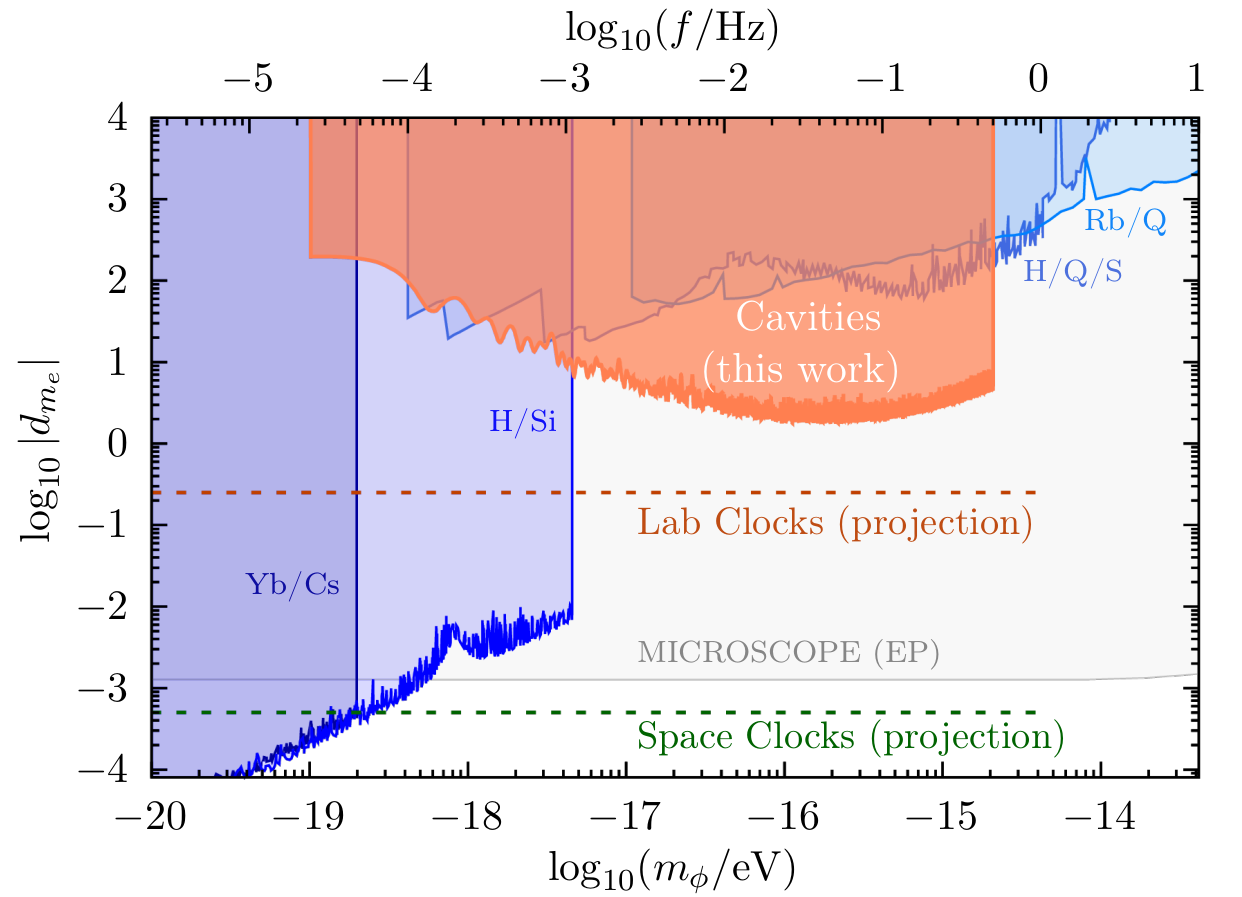Melina Filzinger, Ashlee R. Caddell, Dhruv Jani, Martin Steinel, Leonardo Giani, Nils Huntemann, and Benjamin M. Roberts, Physical Review Letters (in press), arXiv:2312.13723
Physical Review Letters (in press), arXiv:2312.13723
We devise and demonstrate a method to search for non-gravitational couplings of ultralight dark matter to standard model particles using space-time separated atomic clocks and cavity-stabilized lasers. By making use of space-time separated sensors, which probe different values of an oscillating dark matter field, we can search for couplings that cancel in typical local experiments. This provides sensitivity to both the temporal and spatial fluctuations of the field. We demonstrate this method using existing data from a frequency comparison of lasers stabilized to two optical cavities connected via a 2220 km fiber link [Nat. Commun. 13, 212 (2022)], and from the atomic clocks on board the Global Position System satellites. Our analysis results in constraints on the coupling of scalar dark matter to electrons, \(d_{m_e}\), for masses between \(10^{-19}\) eV/c^2 and \(2\times 10^{-15}\) eV/c^2. These are the first constraints on \(d_{m_e}\) alone in this mass range.
